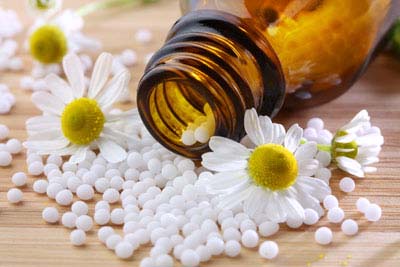Principle of Similars in Homeopathy

Homeopathy is a department of natural medicine based on the Principle of Similars and a non-toxic system of experimental science of therapeutics originated in Germany. From Germany (year 1796) homeopathy spreads to Austria (1816) and then to the rest of the Europe. The birth date of the founder and father of Homeopathy i.e. 10 April every year is celebrated as ‘World Homeopathy Day’ and the week following his birthday (10-16th April) is celebrated as ‘World Homeopathy Awareness Week’
Principle of similar (Let likes be treated by likes) talks about the pathogenetic and symptomatic similarity between the drug and the disease and is stated as
The drug which is most likely to cure or relieve a case of disease is that which when administered to a healthy person, has shown itself capable of producing symptoms and change in sensation experienced which most closely resemble those of the case of disease.
In 1790, he discovered principle of similar when he found that drug which was known to be curative actually produces those very symptoms when given to a healthy person. He said, “Substances which arouse a kind of fever extinguish the types of intermittent fevers…Cinchona cures intermittent fever by virtue of its power to produce in the healthy, a similar affection”. But the principle was published in 1796.
The same drug acts differently when given to a person under conditions of disease from what it would do in the same person when in health. The powers of any drug over the human organism, is the sum-total of the symptoms and alternations it has caused when introduced into a healthy organism, and the symptoms and morbid changes it has removed when given to the sick
In other words, the specific curative property of a drug lies in its power of producing similar symptoms in a healthy individual i.e. the drugs have sickness-making as well as sickness curing properties, the sickness being the same [3]. What a drug can cause it can cure; and that if you want to know what a drug can cure, you have only to discover what it can cause
Homoeopathy maintains that there is a constant relationship between the effect of drugs on the healthy and the curative reactions they call forth in the sick, so, clearly, you must test drugs on healthy people. If a compound caused symptoms in healthy volunteers, it should then also serve as a remedy for patients who actually suffer from such symptoms.
Hahnemann found that when a medicine was able to produce changes similar in nature and expression to that of the natural disease in the patient, it stimulated a response in spite of obstacles or sluggishness of the system. This response was the natural one the body used in curing itself. The response was a temporary aggravation of one or more symptoms followed by quick amelioration.
Disease can be cured by a medicinal substance given in small doses that produces similar symptoms in health people when given in large doses. In simple words, the medicine can cure when given in picogram doses what it can cause in milligram doses.
1. Red onion when peeled makes your eyes water and your nose burn. If you are having an attack of hay fever/common cold with watering eyes and a burning nose or a cold which is ‘worse indoors, better in open air’, a homeopathic remedy made from onion called allium cepa can relieve it.
2. Poison ivy causes redness, intense itching, burning, blistering and sometimes stiff muscles. Potentised poison ivy called as rhus tox (a homeopathy medicine) has been used for herpes, burns, eczema, allergy, arthritis, etc.
3. When you are stung by a bee you feel a burning, stinging pain and the tissues surrounding the area swell up. Some relief is gained from applying cold to the area. If you had swollen tonsils with burning and stinging pain relieved by cold, a homeopathic remedy prepared from the same source Apis Mellificia could cure.
4. Coffee keeps people awake and alert. A remedy prepared from coffee called Coffea cruda in very small doses might be appropriate for helping someone with insomnia with an overly alert mind.
5. Eyebright causes a clear and bland nasal discharge along with tears that burn and irritate the skin under the eye. The homeopathic medicine Euphrasia prepared from eyebright cures it.
6. Quinine (derived form Cinchona bark) given in daily doses to a healthy person can cause symptoms similar to malaria. Indeed, the Cinchona officinalis, a homeopathic medicine prepared from cinchona bark, is curative in many patients with malaria.
7. White Hellebore, in large doses, causes violent purging that leads to severe dehydration-symptoms similar to cholera. Veratrum album, a homeopathic medicine prepared from White Hellebore is effective against cholera
8. Belladonna, a homeopathic medicine, is used to treat scarlet fever (fever due to Group A Streptococcal (bacterial) Infection), since the symptoms of belladonna poisoning closely resemble those of scarlet fever
9. Human body can tolerate about 7 grams of salt per day, but if we triple it and give 21 grams per day, we will have a very sick person within a fortnight with a host of symptoms peculiar to the substance given in high enough doses. A medicine prepared from common salt called Natrum mur can cure host of diseases ranging from hypertension to depression.



+1.svg)
